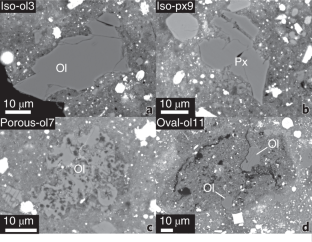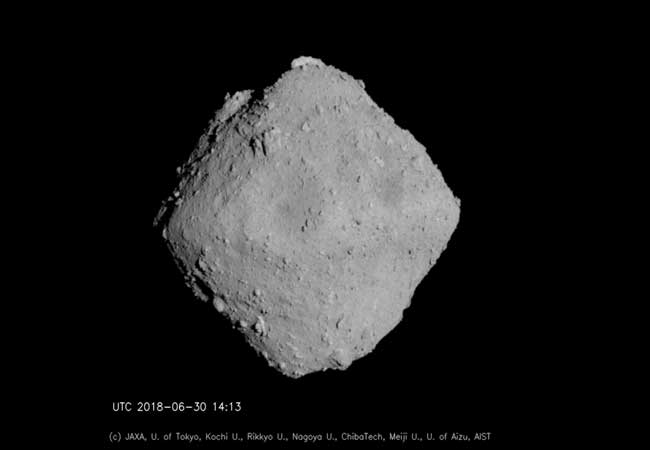2022-09-22 アメリカ・ローレンスリバモア国立研究所(LLNL)
マグネシウムに富むカンラン石と輝石の同位体分析により、アメーバ状のカンラン石集合体とマグネシウムに富むコンドリュールという、太陽系星雲で形成された2種類の高温物体がリュウグウの母天体へ付加したことを示す強い証拠になった。
研究チームは、リュウグウの無水ケイ酸塩の酸素同位体比を測定し、リュウグウの起源、ひいてはCIコンドライト隕石の親小惑星の起源に強い示唆を与える結果を解析した。
酸素同位体データと結晶粒の形態から、リュウグウの原始岩に含まれていた物質が推定できる。また、C0009の無水ケイ酸塩とCI以外の炭素質コンドライトに含まれる他の高温成分との関係の可能性が明らかになった。
<関連情報>
- https://www.llnl.gov/news/team-identifies-parent-body-materials-ryugu-asteroid
- https://www.nature.com/articles/s41550-022-01762-4
高水和小惑星リュウグウのプロトリスにおける16Oに富む無水ケイ酸塩の取り込み Incorporation of 16O-rich anhydrous silicates in the protolith of highly hydrated asteroid Ryugu
Ming-Chang Liu,Kaitlyn A. McCain,Nozomi Matsuda,Akira Yamaguchi,Makoto Kimura,Naotaka Tomioka,Motoo Ito,Masayuki Uesugi,Naoya Imae,Naoki Shirai,Takuji Ohigashi,Richard C. Greenwood,Kentaro Uesugi,Aiko Nakato,Kasumi Yogata,Hayato Yuzawa,Yu Kodama,Kaori Hirahara,Ikuya Sakurai,Ikuo Okada,Yuzuru Karouji,Satoru Nakazawa,Tatsuaki Okada,Takanao Saiki,Satoshi Tanaka,Fuyuto Terui,Makoto Yoshikawa,Akiko Miyazaki,Masahiro Nishimura,Toru Yada,Masanao Abe,Tomohiro Usui,Sei-ichiro Watanabe & Yuichi Tsuda
Nature Astronomy Published01 September 2022
DOIhttps://doi.org/10.1038/s41550-022-01762-4

Abstract
The abundant phyllosilicate and carbonate minerals characterizing most of the returned particles from asteroid Ryugu suggest a history of extensive aqueous alteration on its parent body, similar to the rare mineralogically altered, but chemically primitive, CI (Ivuna-type) chondrite meteorites. Particle C0009 differs mineralogically from other Ryugu particles examined so far by containing anhydrous silicates at a level of ~0.5 vol%, and thus can help shed light on the unaltered original materials that constituted Ryugu’s protolith. In situ oxygen isotope measurements of the most Mg-rich olivine and pyroxene in C0009 reveal two populations of Δ17O: −25‰ to −15‰ and −8‰ to −3‰. The former and the latter populations correlate well with silicate morphologies similar to those seen in amoeboid olivine aggregates and chondrule phenocrysts, respectively, both of which are abundant in less aqueously altered carbonaceous chondrites. This result also highlights the presence of olivine with Δ17O close to the solar value in either a CI chondrite or an asteroid with CI-chondrite characteristics, and provides strong evidence that amoeboid olivine aggregates and Mg-rich chondrules accreted into Ryugu’s protolith. Our data also raise the possibility that the protoliths of CI and other carbonaceous chondrites incorporated similar anhydrous silicates.



